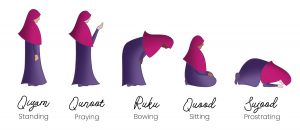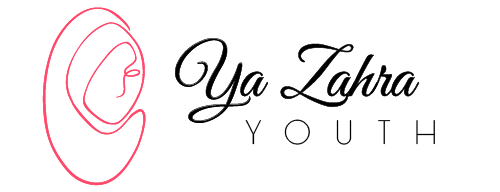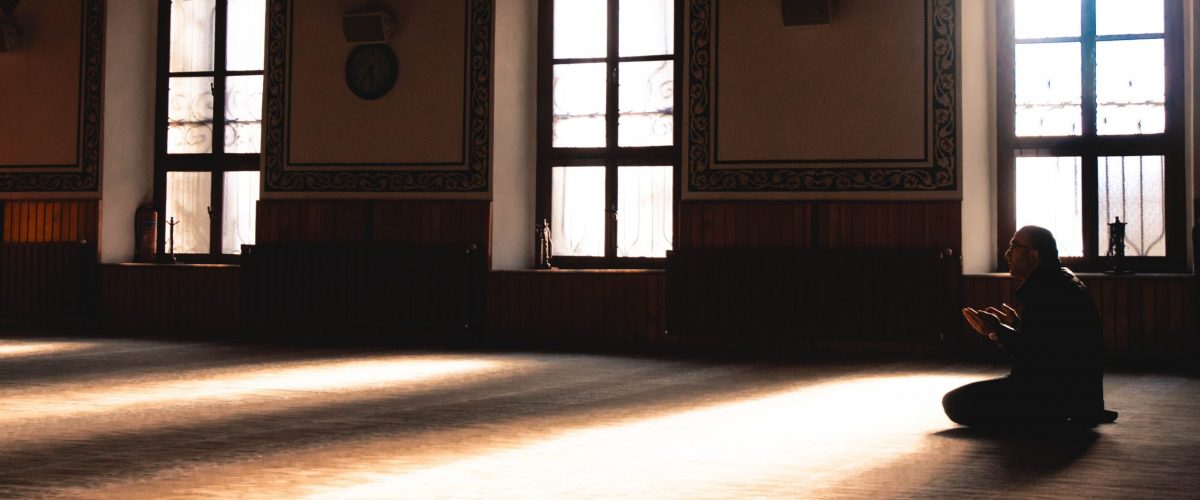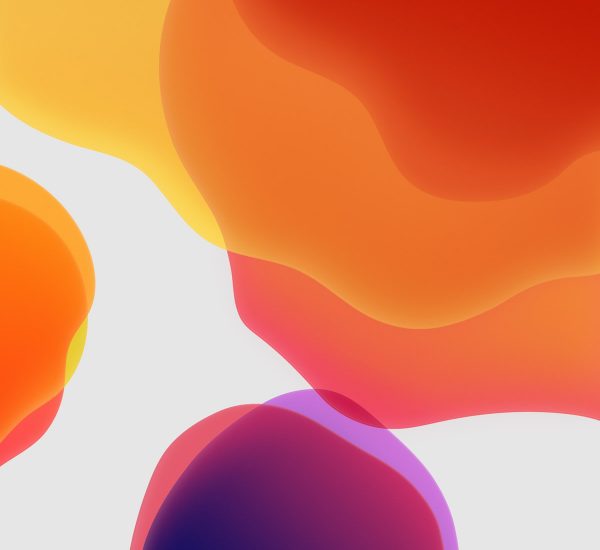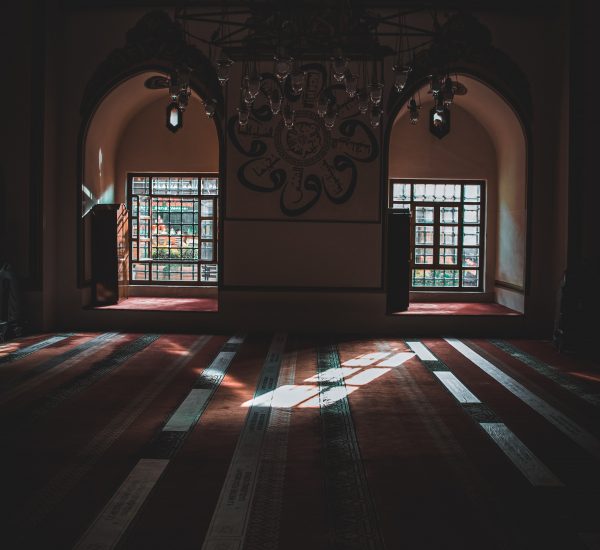What is Salat?
Salat (prayer) is a form of worship with specific postures and is obligatory upon Muslims once they reach the age of maturity. There are different types of salat, and each type comes with its own set of rules and conditions.
Salat in the Holy Quran
There are various verses that point to the salat, one of them being:
وَأَقِمِ الصَّلَاةَ ۖ إِنَّ الصَّلَاةَ تَنْهَىٰ عَنِ الْفَحْشَاءِ وَالْمُنكَرِ ۗ وَلَذِكْرُ اللَّـهِ أَكْبَرُ ۗ وَاللَّـهُ يَعْلَمُ مَا تَصْنَعُونَ
“and maintain the prayer. Indeed the prayer restrains from indecent and wrongful conduct, and the remembrance of Allah is surely greater. And Allah knows whatever [deeds] you do.” (29:45)
Postures of Salat
Salat has a specific form, with postures that are made multiple times throughout it. To understand the steps of salat, we should first understand the different postures of salat. (Click on each tab below to read the description)

During Qiyam, one should be motionless, stand as straight as possible and keep their eyes on the place of sujood. It is mustahab for men to stand with their feet a little bit apart, and for women to stand with their feet close together. It is also mustahab for men to keep their hands on their thighs, and for women to keep their hands on their chest.
Qunoot is the posture for making ‘dua’ (prayer) during salat. Just like qiyam, one should stand straight and hold their hands up together with their palms facing them.
Ruku is made once in every unit of prayer, with an exception in Salat-Al-Ayaat. In Ruku one should bend as low as possible while keeping their palms on their knees and their eyes on the place of sujood.
Quood is the resting position between the two sujood or the position in which we recite ‘Tashahud’. During quood one should sit straight with their feet folded under them and their eyes on the place of sujood.
Each unit of prayer has 2 sujood, with a sitting gap. When in sujood one should prostrate as low as possible and seven parts of the body must be resting on the ground (the forehead, the two palms, the two knees and the toes of both feet). Sujood must be performed on earth, or anything that grows from earth which is not eaten or worn by us. For example lettuce leaves are eaten by us, so sujood cannot be performed on them. As we perform sujood on earth, we also try to perform it on the best of earth: Khak-e-Shifa (The earth from Karbala). This earth is usually made into small tablets, usually referred to as ‘muhr’, ‘turbat’, or ‘sajdahgah’.
